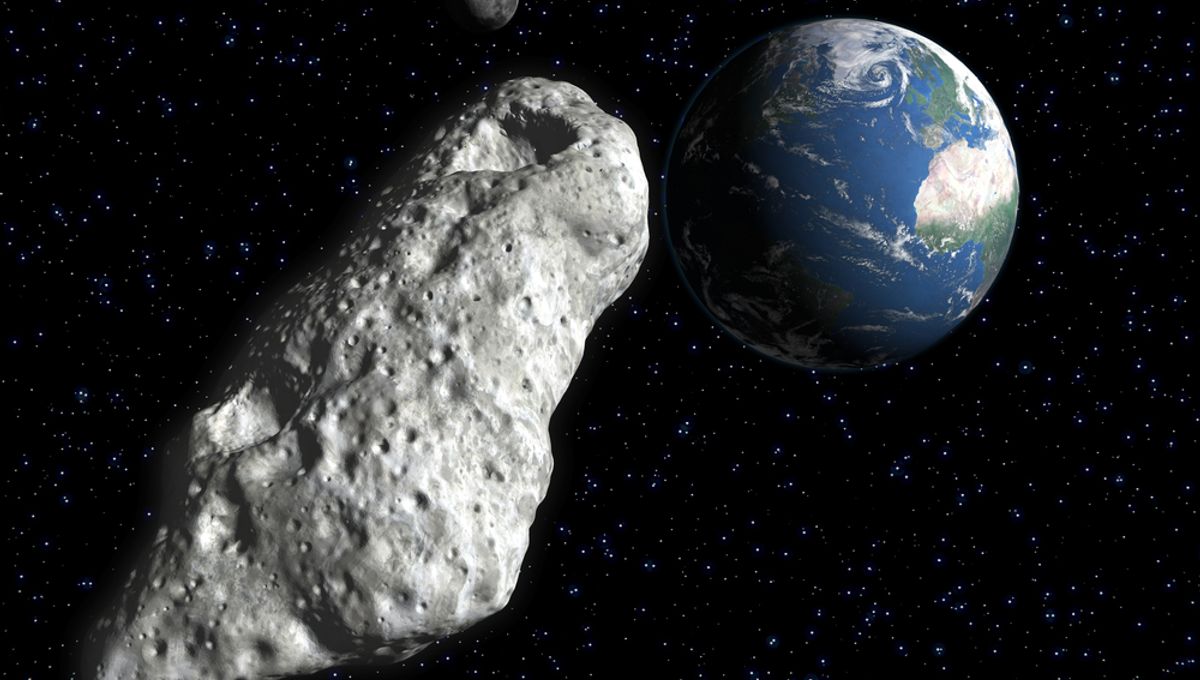
Last year, a pair of amateur astronomers discovered an object that made a partial orbit of the Earth. It was named 2022 NX1 because of the possibility it was an asteroid temporarily captured by Earth’s gravity, but a far more boring possibility remained – that this was some leftover rocket humanity had forgotten. A new paper confirms 2022 NX1’s natural status, making it a once and future mini-moon, with a possibility of hitting Earth later this century.
In addition to our large and crucial Moon, the Earth sometimes briefly acquires other objects, known as mini-moons, that stray into its gravitational well and tarry for a while. Presumably, this has been going on since the birth of the solar system, but only recently has anyone had the capacity to detect them. One prominent example occurred recently with the object 2020 SO.
However, humanity’s capacity to discover mini-moons has coincided with our dumping thousands of artificial satellites and pieces of rocket into Earth-orbit, and it can be hard to tell the difference. J002E3 was thought to be an asteroid 20 years ago, until found to be the upper stage of the Apollo 12 mission. Consequently, when Grzegorz Duszanowicz and Jordi Camarasa discovered 2022 NX1, they weren’t sure what they had. Now, a paper in Astronomy and Astrophysics reveals the true nature of the find, as well as its future prospects.
2022 NX1 was discovered on July 2 from Moonbase South Observatory, Namibia, and was calculated to have made its closest approach to Earth on June 26. It’s rated a 1.2 percent chance of hitting Earth between 2075 and 2122, but at an estimated 5-10 meters (16.5-33 feet) across won’t do widespread damage – although a Chelyabinsk-like detonation is possible.
The discovery led to a debate as to whether 2022 NX1 is a piece of space junk, an asteroid co-orbiting with Earth, or more interesting still, some form of lunar ejecta. The question was considered worth of time on the giant Gran Telescopio Canarias telescope and on August 6, a team there managed to observe the object. They have now confirmed that its spectra looks like nothing artificial, nor something thrown off the main Moon.
Therefore, 2022 NX1 is an asteroid, probably a K-type, and qualifies as a mini-moon. The combination of these and previous observations show 2022 NX1 was only “captured” by the Earth (had negative geocentric energy) for 21 days. This wasn’t enough time for it to complete a single orbit, which might lead some people to call its status as a mini-moon into question, but it met the official definition.
2022 NX1 has been temporarily captured at least twice before in 1980-81. It’s thought its orbit will return it to that status for a period in 2051, perfectly timed for a billionaire frustrated by humanity’s failure to reach Mars to seek fame by trying to set foot on it.
Intriguingly, 2022 NX1 experienced two capture events on a single close encounter – following a 98-day visit ending January 1981 with 29 days of negative geocentric energy a few weeks later. Something similar will happen in 2052. We’ve never seen this with a near-Earth asteroid before.
Tiny as it is – one to three giraffes long in the current parlance – 2022 NX1 is still considerably larger than previous confirmed mini-moons. For example, 2020 CD3 was thought to be 3.5 meters (11.5 feet) long at maximum. Previous mini-moons have been V-type asteroids. “The discovery of 2022 NX1 confirms that mini-moons can be larger than a few meters and also that they belong to a heterogeneous population in terms of surface composition,” the authors conclude.
The paper is published in Astronomy and Astrophysics.
Source Link: Last Year The Earth Had A Mini-Moon And It Will Return